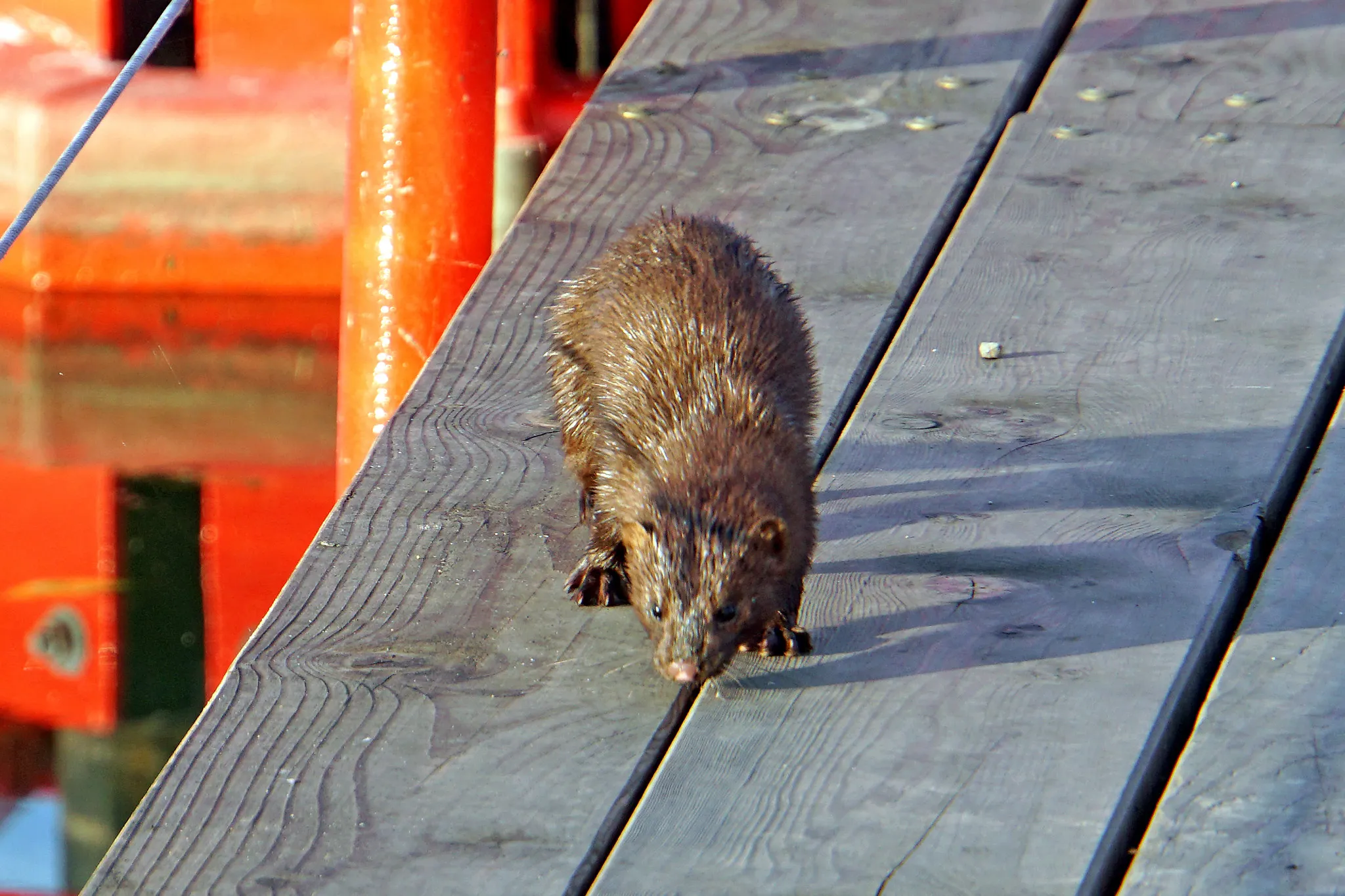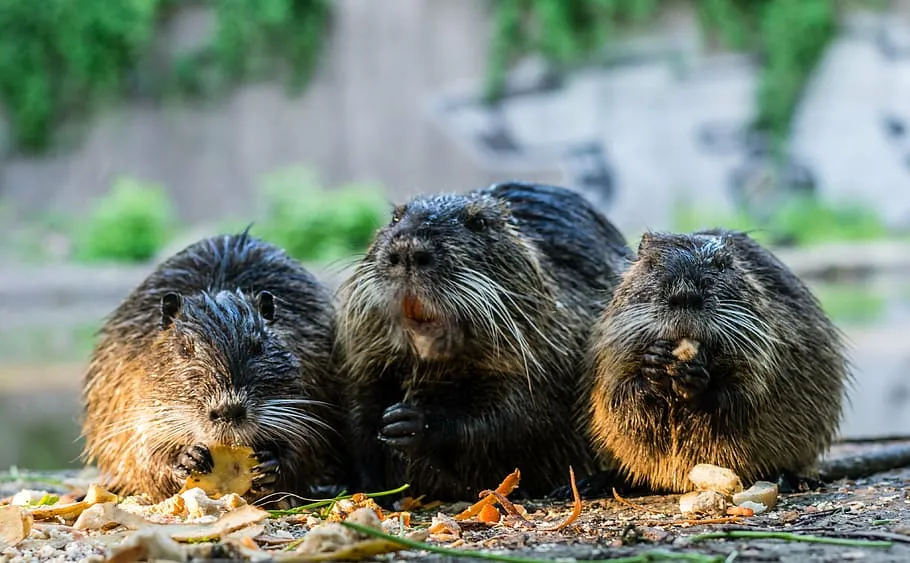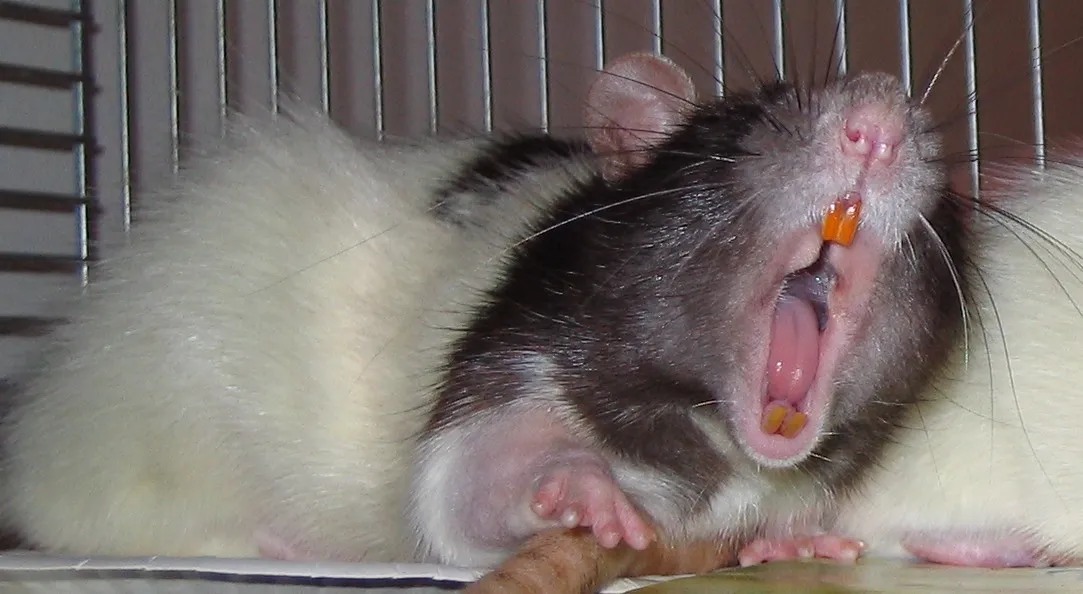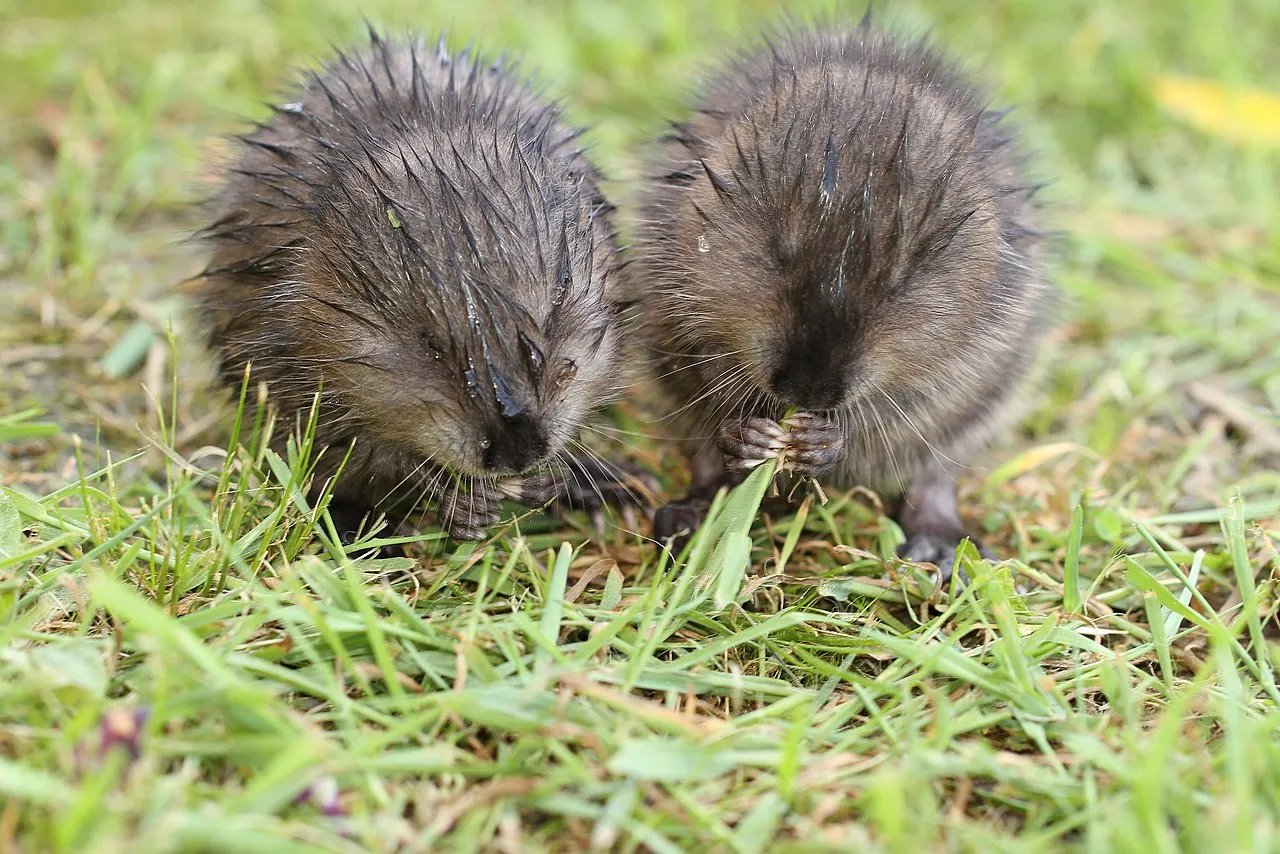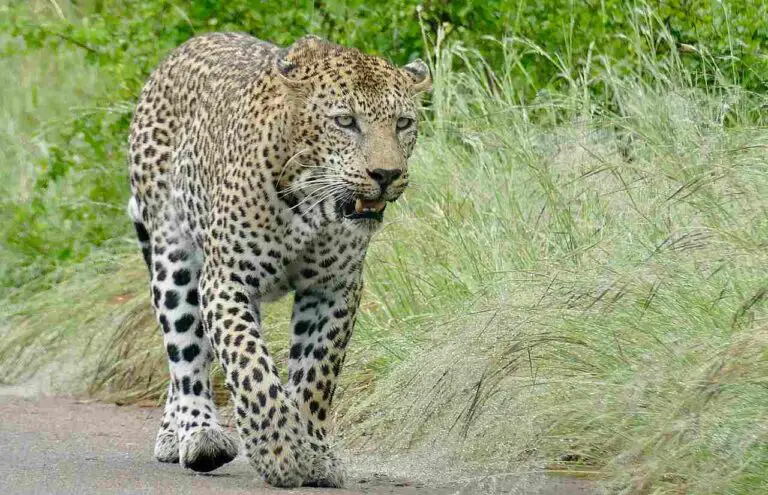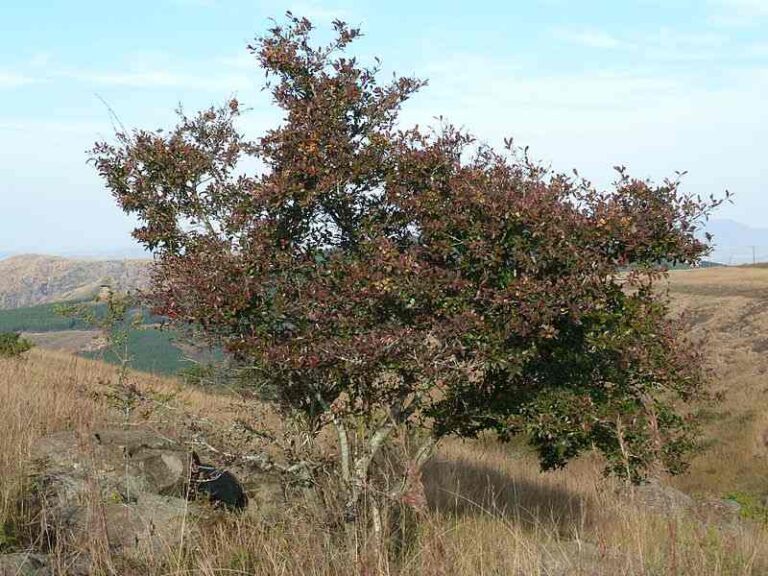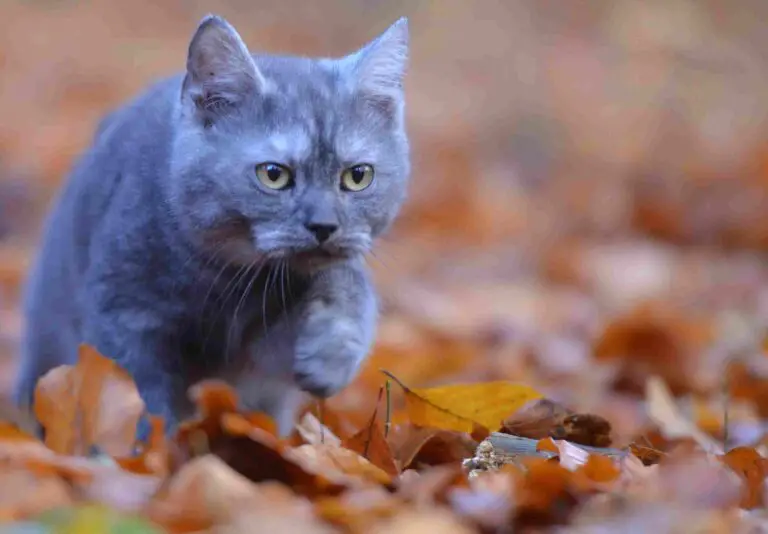Muskrat Vs Nutria Swimming Ability, Tail Morphology, Overall Comparison
Navigating the distinctions between muskrats and nutrias provides valuable insights into their unique characteristics, particularly in tail behavior and swimming habits. By understanding these differences, observers can appreciate the diversity within the rodent family and their ecological roles.
I. Tail and Swimming Characteristics:
– Muskrat Tail: The muskrat exhibits a keeled tail, clearly seen undulating behind its body while swimming. This distinctive feature sets it apart, contributing to its efficient aquatic locomotion.
– Nutria Tail: In contrast, nutria tails remain still while swimming, showcasing a different behavior compared to muskrats. The tail of a nutria is rounded and lacks the keel observed in muskrats.
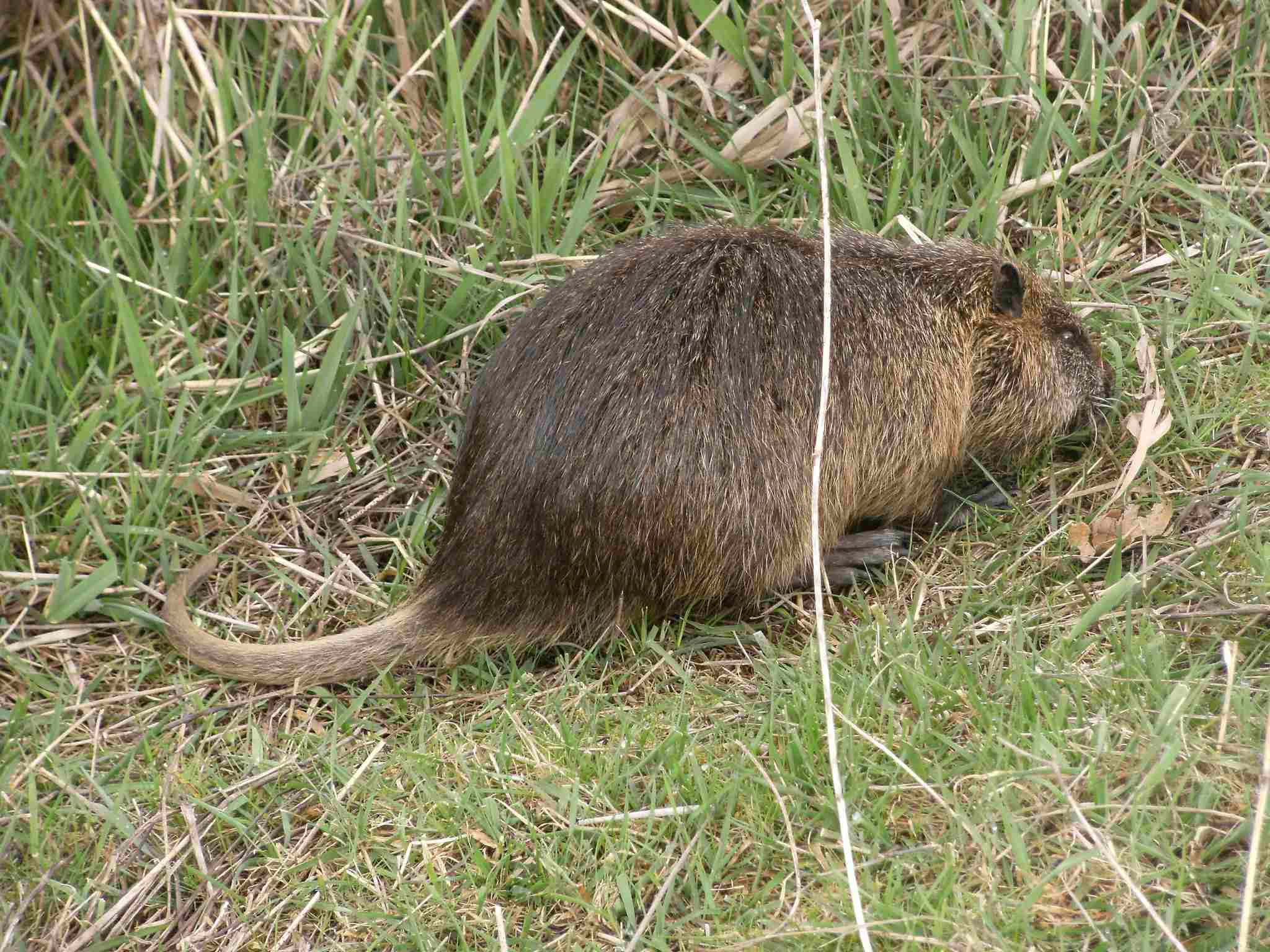
II. Size Variation:
– Muskrats weigh approximately three to four pounds, showcasing a smaller size compared to nutrias, which range from 11 to 22 pounds. This substantial difference in weight aids in distinguishing between the two species.
III. Herbivorous vs. Omnivorous:
– While muskrats are omnivorous, nutrias are purely herbivorous. This dietary distinction reflects in their feeding tendencies, with muskrats incorporating both plant and animal matter into their diet.
IV. Ecological Roles:
– Muskrats utilize marsh vegetation to construct characteristic lodges, which are smaller than those of beavers. Nutrias, on the other hand, leave distinctive signs, including droppings, and may excavate burrows in riverbanks and lake margins.
V. Whiskers and Tails:
– Nutrias can be distinguished by their long, white whiskers and rounded tails, providing clear visual cues. In contrast, muskrats and beavers have black whiskers and tails with different shapes.
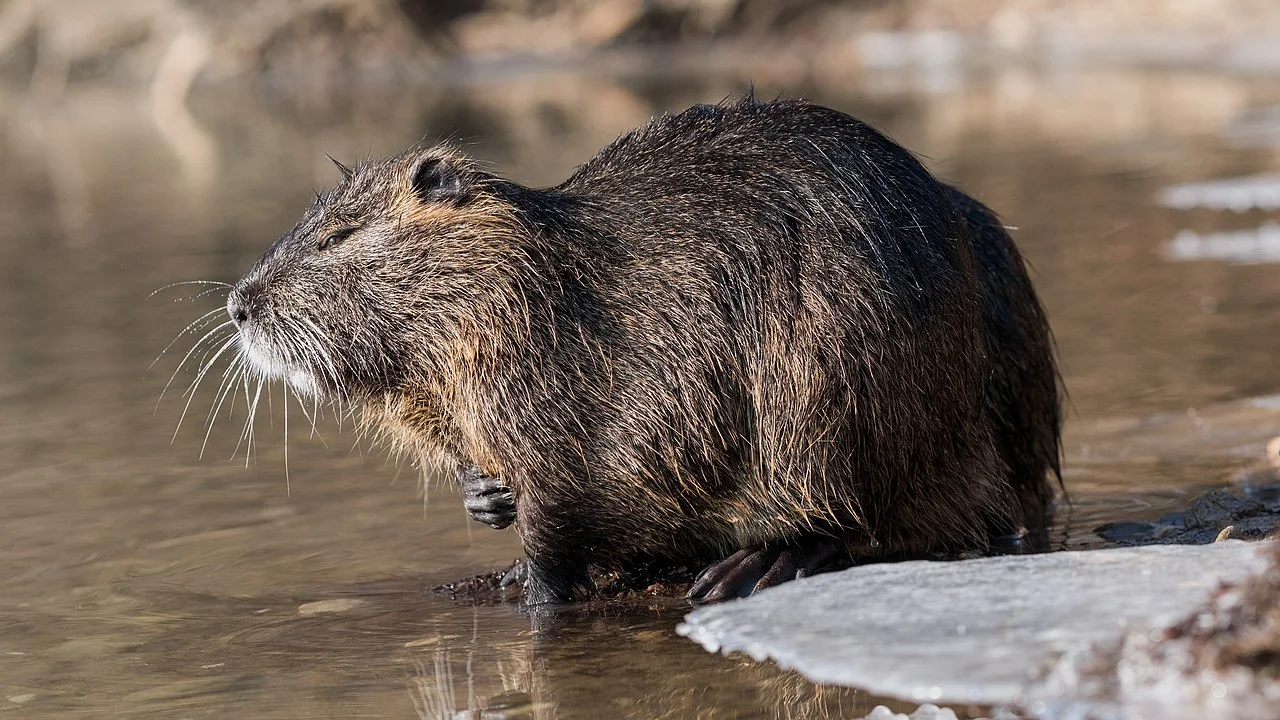
VI. Invasive Nature:
– Nutrias are recognized as invasive rodents in various regions, and their presence can have ecological implications. Understanding their characteristics aids in effective management and conservation efforts.
*Details of Comparison
| Criteria | Muskrat | Nutria |
| Appearance | Compact, dark brown fur |
Larger, reddish-brown coarse fur
|
| Size | 10-14 inches, 1-4 pounds |
17-25 inches, 15-22 pounds
|
| Weight | 1-4 pounds | 15-22 pounds |
| Dentition and Bite Force (PSI) | Moderate bite force | Strong bite force |
| Physical Offensive Advantages | Agility and speed | Larger size |
| Physical Defensive Advantages | Agility, swimming ability |
Size, adaptability
|
| Speed | 3-4 mph | 5-7 mph |
| Agility | Agile in water and on land |
Agile, adaptable movements
|
| Senses | Touch, hearing, vision |
Touch, hearing, vision, nocturnal
|
| Overall Physical Capacity | Aquatic life, moderate strength |
Versatile, greater physical strength
|
| Habitat Preference(s) and Geographic Region | Wetlands, North America, Europe, Asia |
Wetlands, South America (origin), global
|
| Tracks | Webbed feet, tail drag mark |
Larger tracks, webbed feet, tail drag mark
|
| Lifespan | 2-3 years | 8-10 years |
| Mode of Feeding | Aquatic plants |
Aquatic vegetation, crops, grasses
|
| Intelligence | Limited cognitive abilities |
Higher intelligence, adaptability
|
| Social Behavior | Generally solitary |
More social, family groups
|
| Mode of Reproduction | Breeds throughout the year, short gestation |
Breeding season influenced by environment, longer gestation
|
| Parental Behavior | Female cares for young, relatively independent |
Both parents contribute, young stay for months
|
| Proximity to Human-Inhabited Areas | Near wetlands, may cause localized damage |
Near water, considered invasive in some areas
|
| Behavior Toward Humans | Shy, avoids direct contact |
Tolerant, may approach for food
|
| Danger Posed to Humans | Minimal danger, rare bites |
Low danger, occasional aggression
|
| Associated Precautions | Similar precautions for both, emphasis on not feeding nutrias |
Similar precautions for both, emphasis on not feeding nutrias
|
| Conservation Status | Generally least concern, stable populations |
Varies, considered invasive in some regions, requires management efforts
|
Key Points
- Muskrats are smaller, while nutrias are larger and more robust.
- Nutrias have a longer lifespan and higher intelligence compared to muskrats.
- Nutrias are more social, forming family groups, while muskrats are generally solitary.
- Nutrias can tolerate human presence, potentially approaching for food, while muskrats are shyer.
- Both species are herbivores, but nutrias have a broader diet.
- Muskrats generally have a more stable conservation status compared to nutrias, which can be invasive in certain regions.
1. Taxonomy
Muskrat:
Kingdom: Animalia
Phylum: Chordata
Class: Mammalia
Order: Rodentia
Family: Cricetidae
Genus: Ondatra
Species: Ondatra zibethicus
Nutria:
Kingdom: Animalia
Phylum: Chordata
Class: Mammalia
Order: Rodentia
Family: Myocastoridae
Genus: Myocastor
Species: Myocastor coypus
2. Appearance
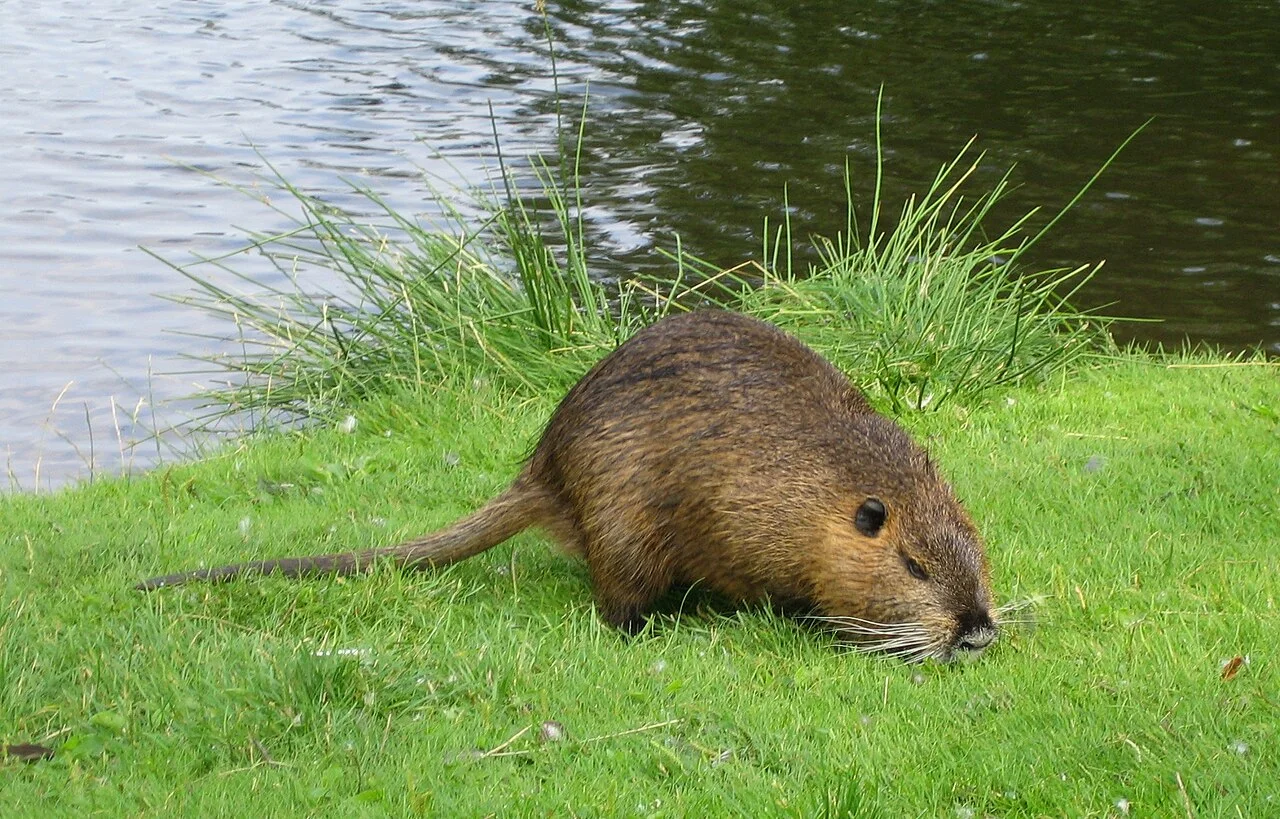
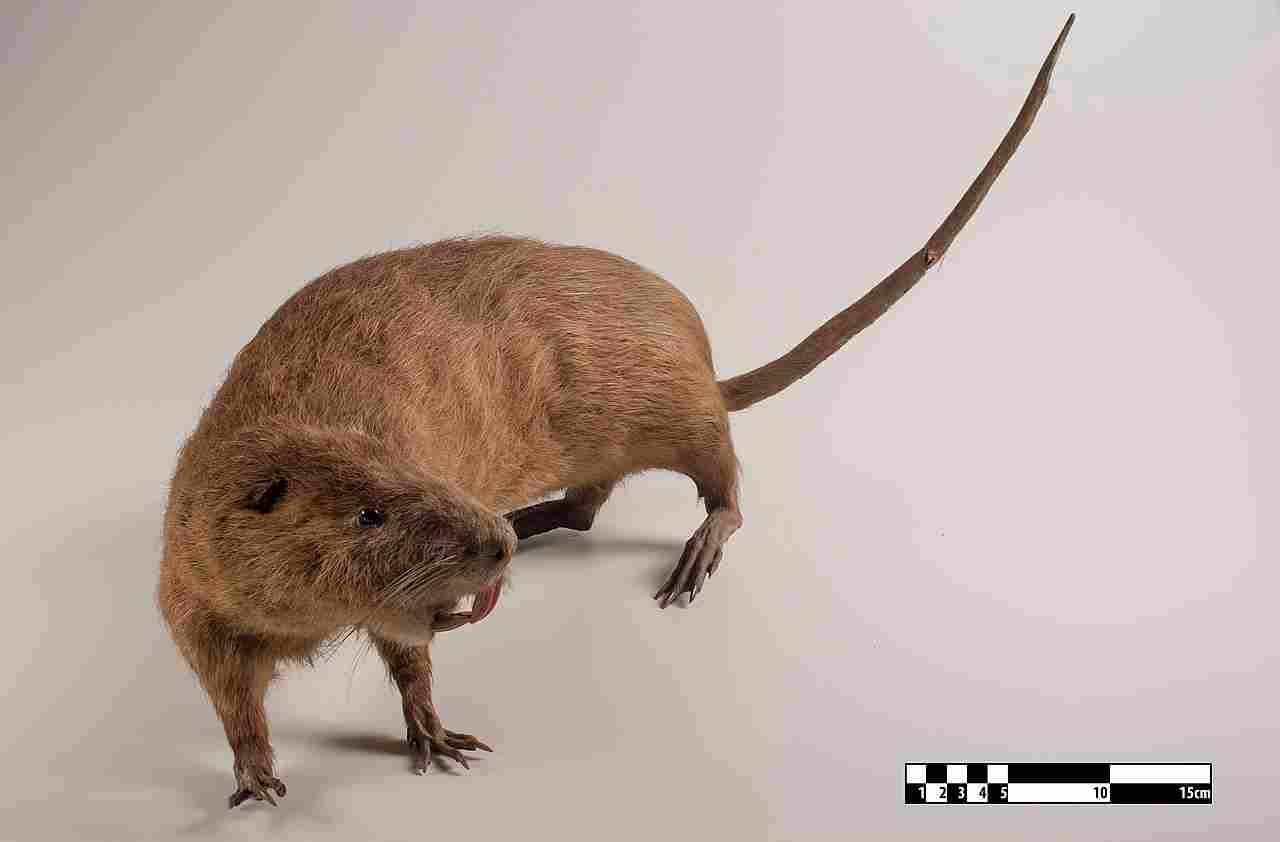
Muskrat:
Compact body with dense, waterproof fur
Short legs and a laterally flattened tail
Dark brown fur with a lighter underbelly
Small ears and eyes
Well-adapted for aquatic environments
Nutria:
Larger and more robust than muskrats
Coarse fur with a reddish-brown color
Round face with small eyes and ears
Long, cylindrical tail, sparsely haired
Adapted for both aquatic and terrestrial habitats
Comparison: Muskrats are smaller with a sleeker appearance, while nutrias have a bulkier build and distinctive facial features.
Ecological Implications: Differences in appearance reflect adaptations to specific habitats, influencing their ecological roles in different environments.
3. Size
Muskrat:
Length: 10-14 inches (25-36 cm)
Tail: 7-11 inches (18-28 cm)
Weight: 1-4 pounds (0.4-1.8 kg)
Nutria:
Length: 17-25 inches (43-64 cm)
Tail: 12-18 inches (30-46 cm)
Weight: 15-22 pounds (7-10 kg)
Comparison: Nutrias are substantially larger than muskrats in terms of length and weight.
Ecological Implications: Size differences impact ecological roles, influencing food consumption, and interactions with other species.
4. Weight
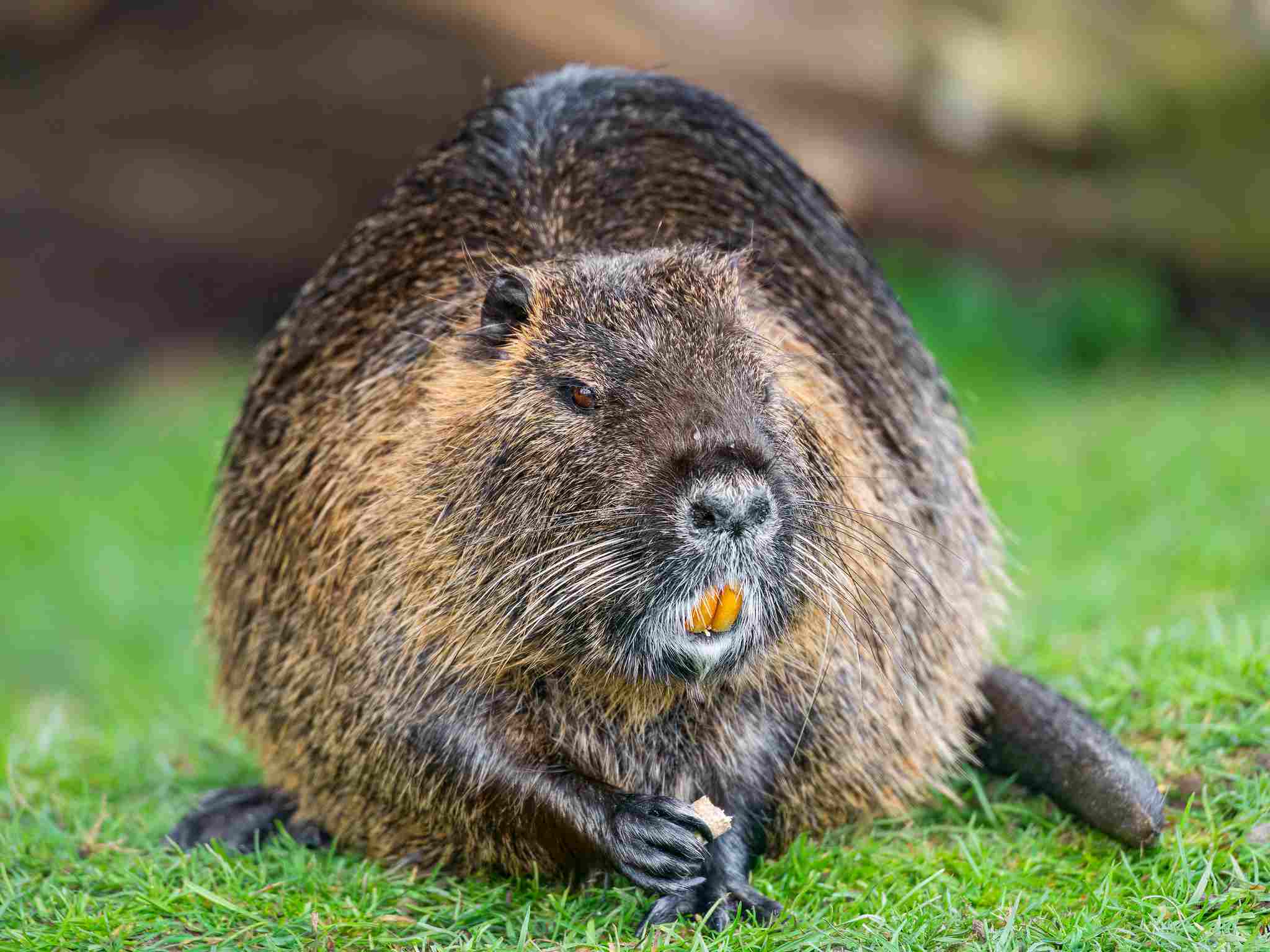
Muskrat:
Adult weight: 1-4 pounds (0.4-1.8 kg)
Nutria:
Adult weight: 15-22 pounds (7-10 kg)
Comparison: Nutrias are significantly heavier than muskrats.
Ecological Implications: Weight affects resource utilization, mobility, and predator-prey dynamics in their respective ecosystems.
5. Dentition and Bite Force (PSI)
Muskrat:
Rodent-like incisors for gnawing
Moderate bite force (unspecified PSI)
Nutria:
Orange incisors that continue to grow throughout life
Strong bite force (unspecified PSI)
Comparison: Nutrias possess stronger incisors and a more potent bite force compared to muskrats.
Ecological Implications: Differences in dentition and bite force impact feeding habits, resource utilization, and interactions within their ecosystems.
6. Physical Offensive Advantages
Muskrat:
Sharp incisors for cutting vegetation and building shelters
Agility and speed for evading predators
Nutria:
Powerful incisors for cutting through tough vegetation
Larger size provides a defensive advantage
Comparison: Nutrias, with their larger size, may have a physical advantage in confrontations.
Ecological Implications: Physical advantages influence their roles in shaping vegetation, modifying habitats, and responding to predation pressures.
7. Physical Defensive Advantages
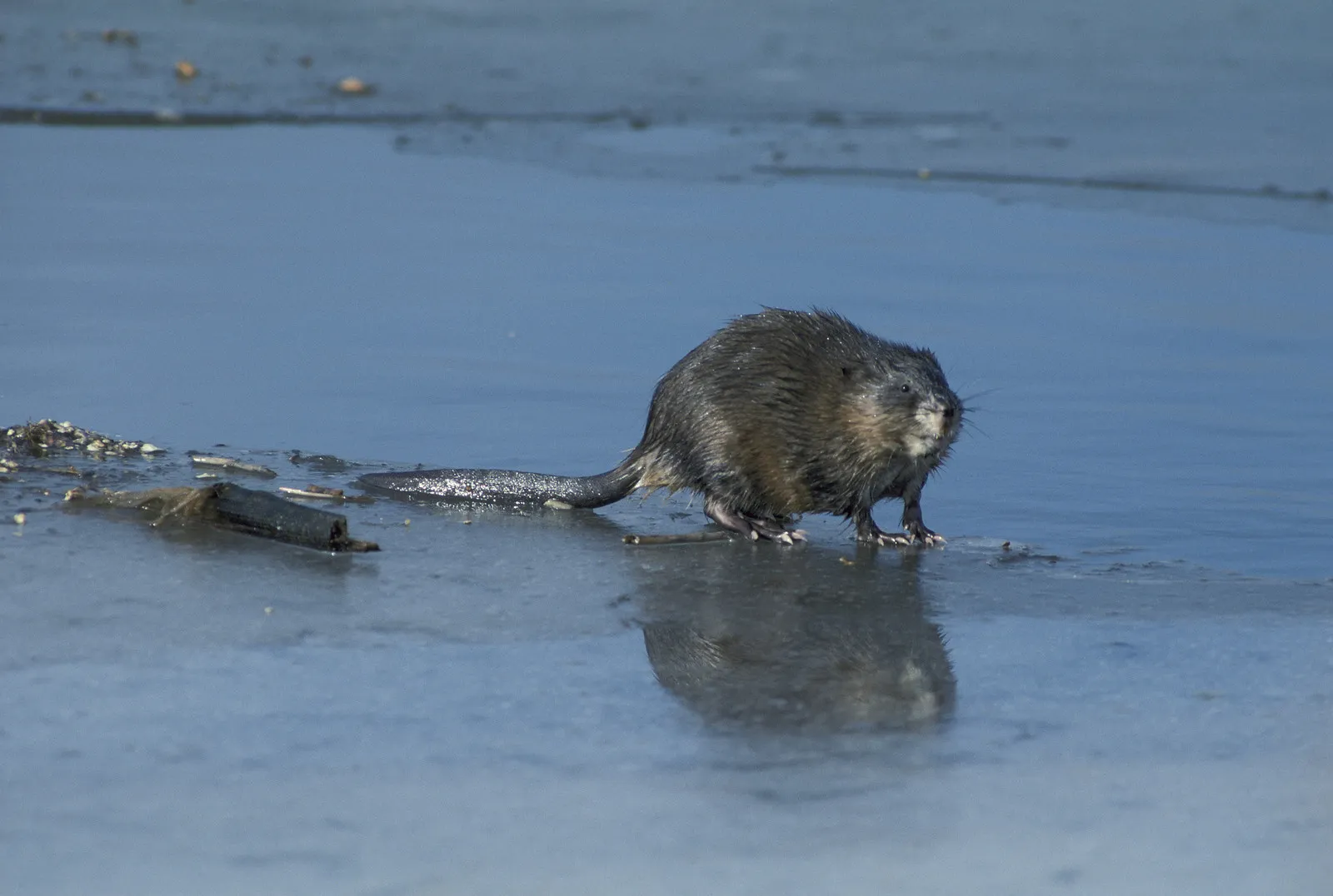
Muskrat:
Agility and quick movements to escape predators
Ability to dive and swim to avoid threats
Nutria:
Size and weight act as a deterrent against smaller predators
Adaptability to both aquatic and terrestrial environments enhances escape options
Comparison: Nutrias, due to their larger size, have a defensive advantage against certain predators.
Ecological Implications: Defensive mechanisms impact predator-prey dynamics and contribute to the overall balance in their ecosystems.
8. Speed (Km/hour or Mile/hour)
Muskrat:
Speed: Approximately 3-4 mph (5-6 km/h)
Nutria:
Speed: Estimated around 5-7 mph (8-11 km/h)
Comparison: Nutrias generally have a slightly higher speed than muskrats.
Ecological Implications: Speed influences their ability to escape predators and secure food resources.
9. Agility
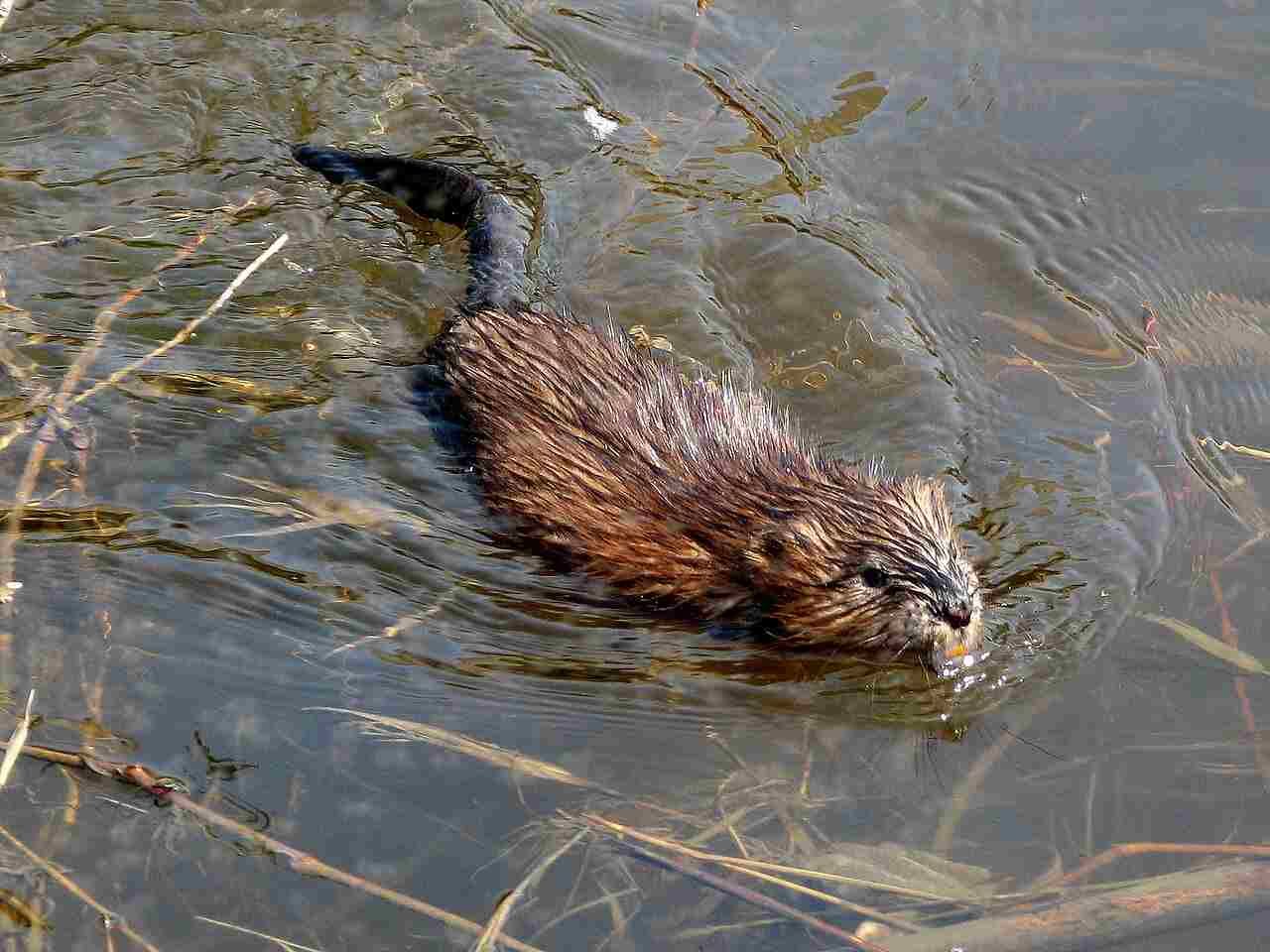
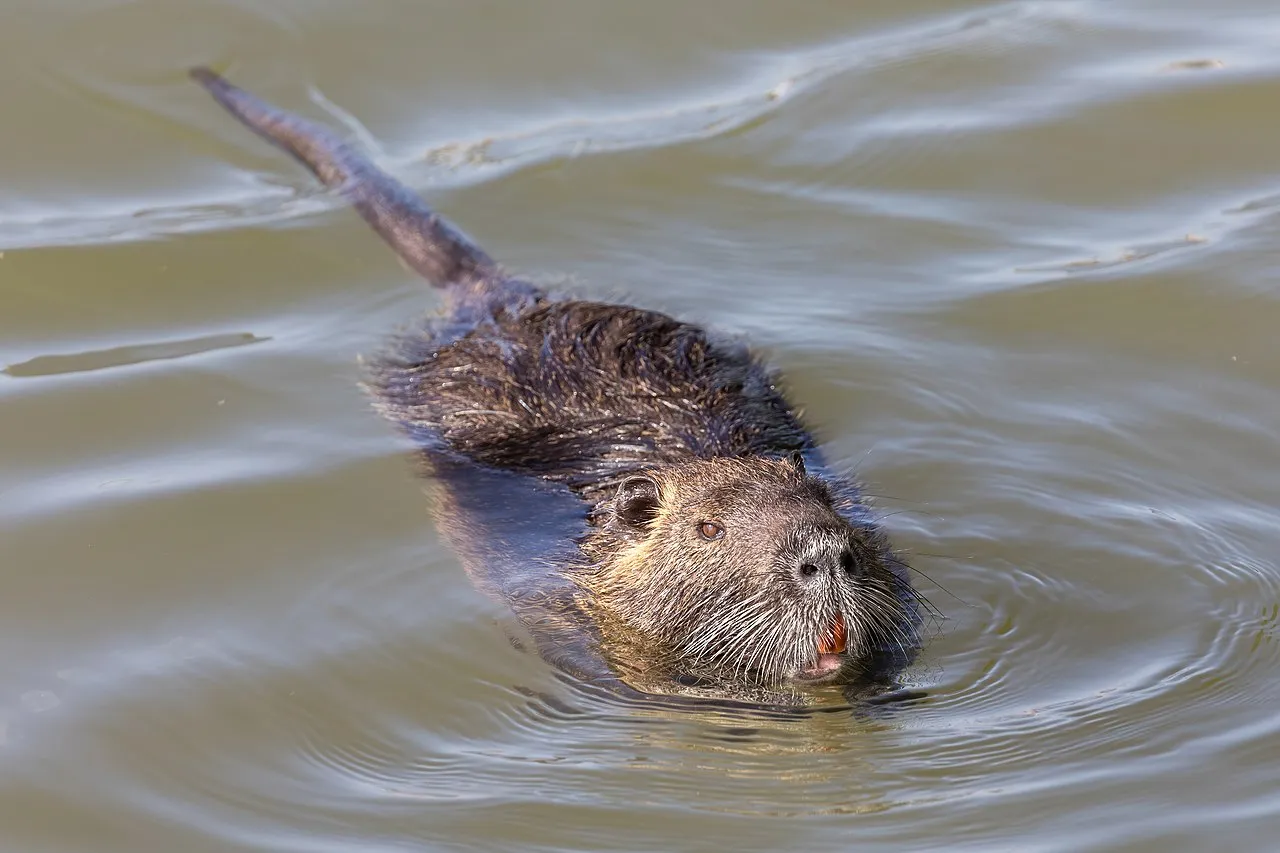
Muskrat:
Agile swimmers with the ability to navigate through aquatic vegetation
Quick movements on land to escape threats
Nutria:
Agile in water and on land, capable of climbing over obstacles
Adaptable movements due to a more robust build
Comparison: Both muskrats and nutrias exhibit agility, but their specific adaptations vary.
Ecological Implications: Agility affects foraging efficiency, predator avoidance, and overall ecological interactions in diverse habitats.
10. Senses
Muskrat:
Well-developed sense of touch using vibrissae (whiskers)
Acute sense of hearing
Adequate vision both in and out of water
Nutria:
Keen sense of touch with facial vibrissae
Good hearing and vision
Well-adapted for nocturnal activities
Comparison: Both species rely on well-developed senses, with slight variations in their adaptations to different environments.
Ecological Implications: Sensory adaptations contribute to their ability to navigate and thrive in specific ecological niches.
11. Overall Physical Capacity
Muskrat:
Well-adapted for aquatic life
Moderate physical strength and endurance
Nutria:
Versatile in both aquatic and terrestrial habitats
Greater physical strength due to a larger build
Comparison: Nutrias have a higher overall physical capacity, allowing them to occupy a broader range of habitats.
Ecological Implications: Overall physical capacity influences habitat preferences, resource utilization, and interactions with other species.
12. Habitat Preference(s) and Geographic Region

Muskrat:
Wetlands, marshes, lakes, ponds, and slow-moving streams
North America, Europe, and Asia
Nutria:
Wetlands, swamps, lakeshores, and riverbanks
Originally South America, now also found in North America, Europe, Asia, and Africa
Comparison: Both species prefer wetland habitats but have some geographic differences in their native ranges.
Ecological Implications: Habitat preferences impact the ecosystems they inhabit and the species they interact with.
13. Tracks
Muskrat:
Webbed hind feet leave distinctive tracks in mud or soft soil
Tail drag mark may be visible
Nutria:
Larger tracks than muskrats, with webbed hind feet marks
Tail drag mark may also be present
Comparison: Tracks can help differentiate between muskrats and nutrias based on size and specific characteristics.
Ecological Implications: Tracking provides insights into their movements, distribution, and potential impacts on local ecosystems.
14. Lifespan
Muskrat:
Typically 2-3 years in the wild
Nutria:
Around 8-10 years in the wild
Comparison: Nutrias generally have a longer lifespan compared to muskrats.
Ecological Implications: Differences in lifespan contribute to population dynamics, reproductive strategies, and ecological roles within their respective habitats.
15. Mode of Feeding
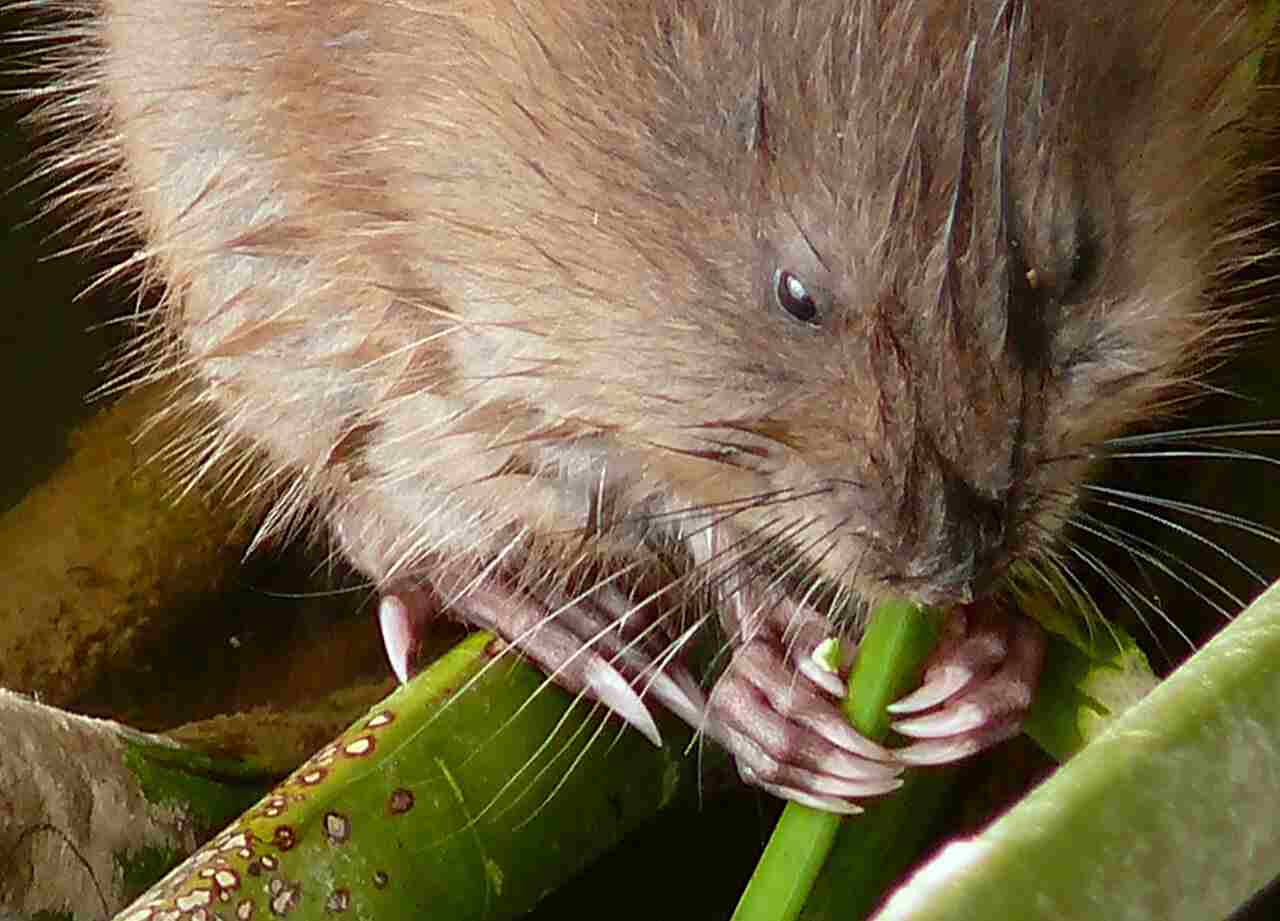
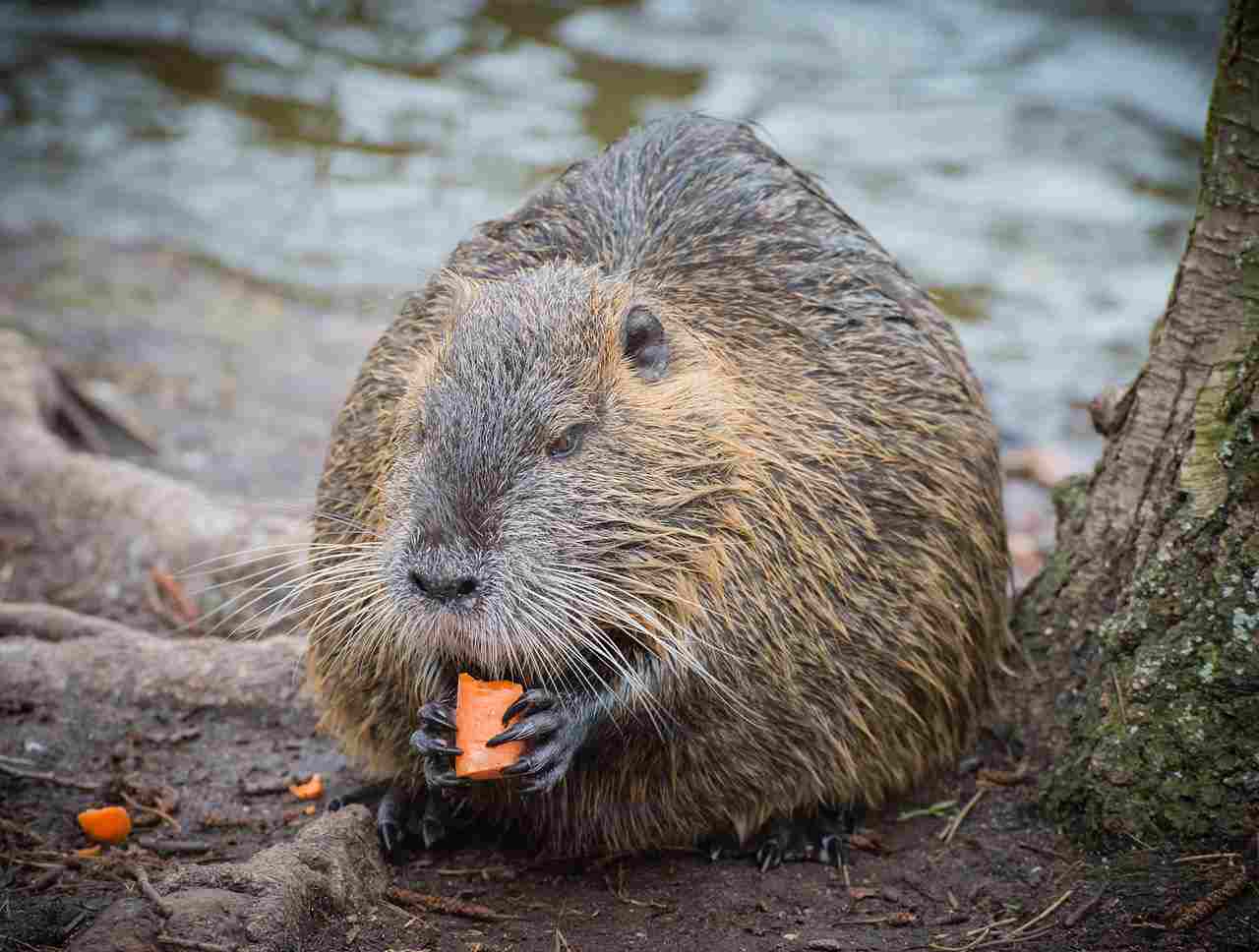
Muskrat:
Herbivores, primarily feeding on aquatic plants, roots, and cattails
Nutria:
Herbivores with a broader diet, including aquatic vegetation, crops, and grasses
Comparison: Nutrias have a more varied diet, including a wider range of plant materials.
Ecological Implications: Varied feeding habits impact vegetation dynamics, nutrient cycling, and interactions with other herbivores.
16. Intelligence
Muskrat:
Limited cognitive abilities, primarily instinct-driven behaviors
Nutria:
Display higher cognitive abilities, problem-solving skills, and adaptability
Comparison: Nutrias show a higher level of intelligence compared to muskrats.
Ecological Implications: Differences in intelligence influence their ability to adapt to changing environments, find food, and respond to threats.
17. Social Behavior
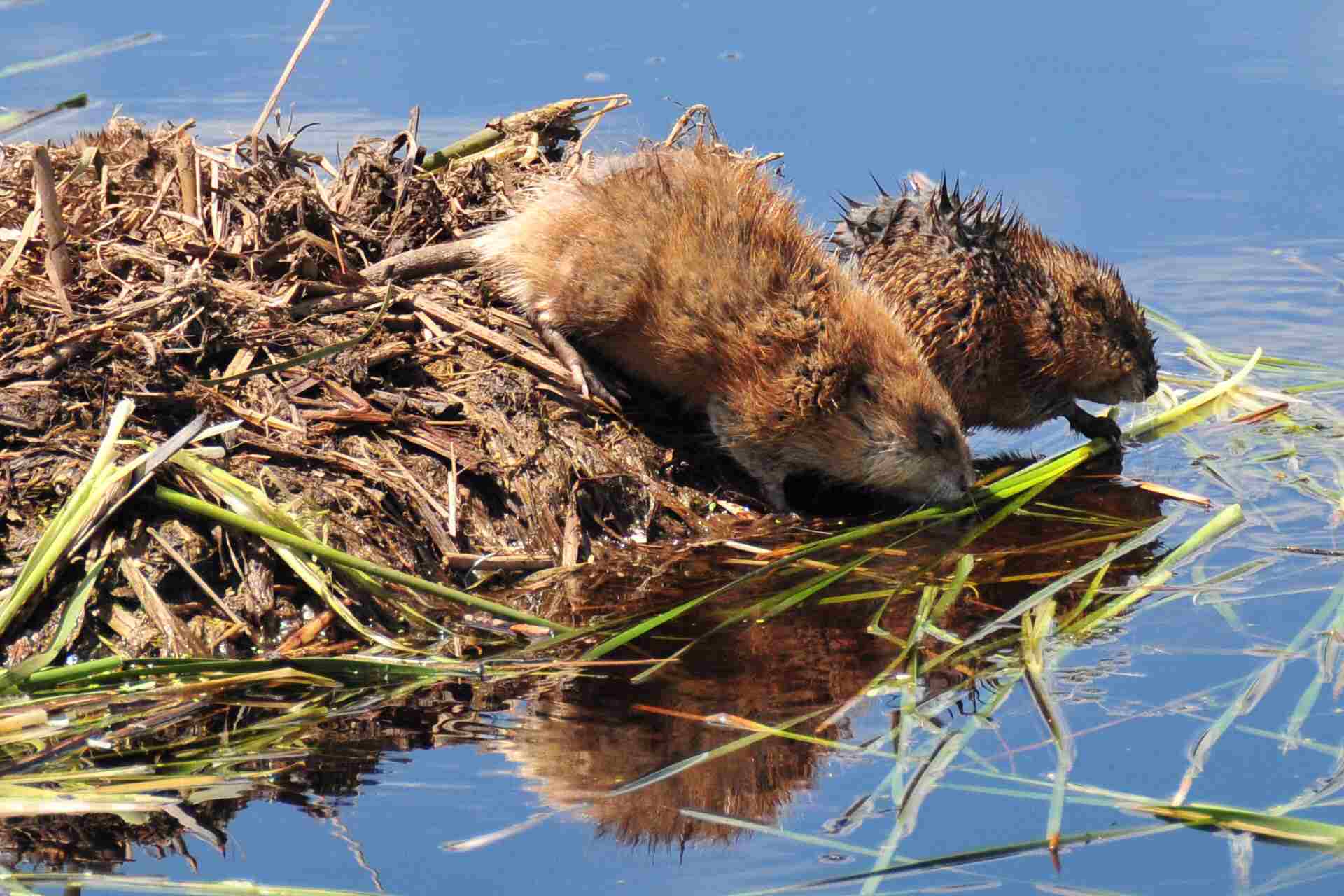
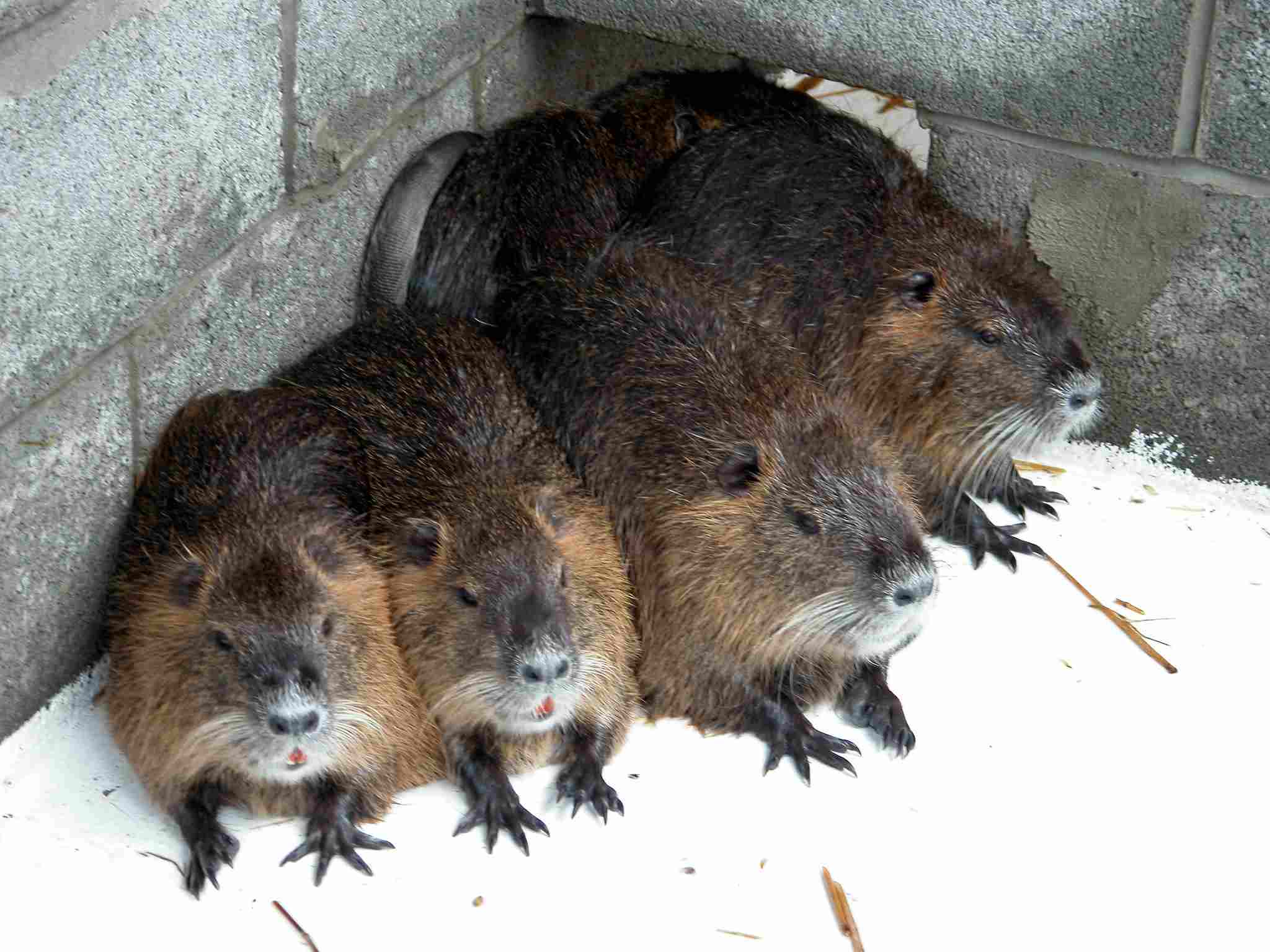
Muskrat:
Generally solitary, except during the breeding season
Construct individual lodges or burrows
Nutria:
More social, often forming family groups
Build communal burrows and nests
Comparison: Nutrias exhibit a higher degree of social behavior compared to muskrats.
Ecological Implications: Social structures impact habitat modification, communication, and cooperative activities within their ecosystems.
18. Mode of Reproduction
Muskrat:
Breeds throughout the year, with peaks in spring and summer
Gestation period around 28-30 days
Typically has 1-2 litters per year, with 4-7 young per litter
Nutria:
Breeding season influenced by environmental factors
Gestation period around 130 days
Usually has 1-2 litters per year, with 1-13 young per litter
Comparison: Both species have multiple litters per year, but nutrias have a longer gestation period and a wider range of litter sizes.
Ecological Implications: Reproductive strategies influence population dynamics and the potential impact on local ecosystems.
19. Parental Behavior
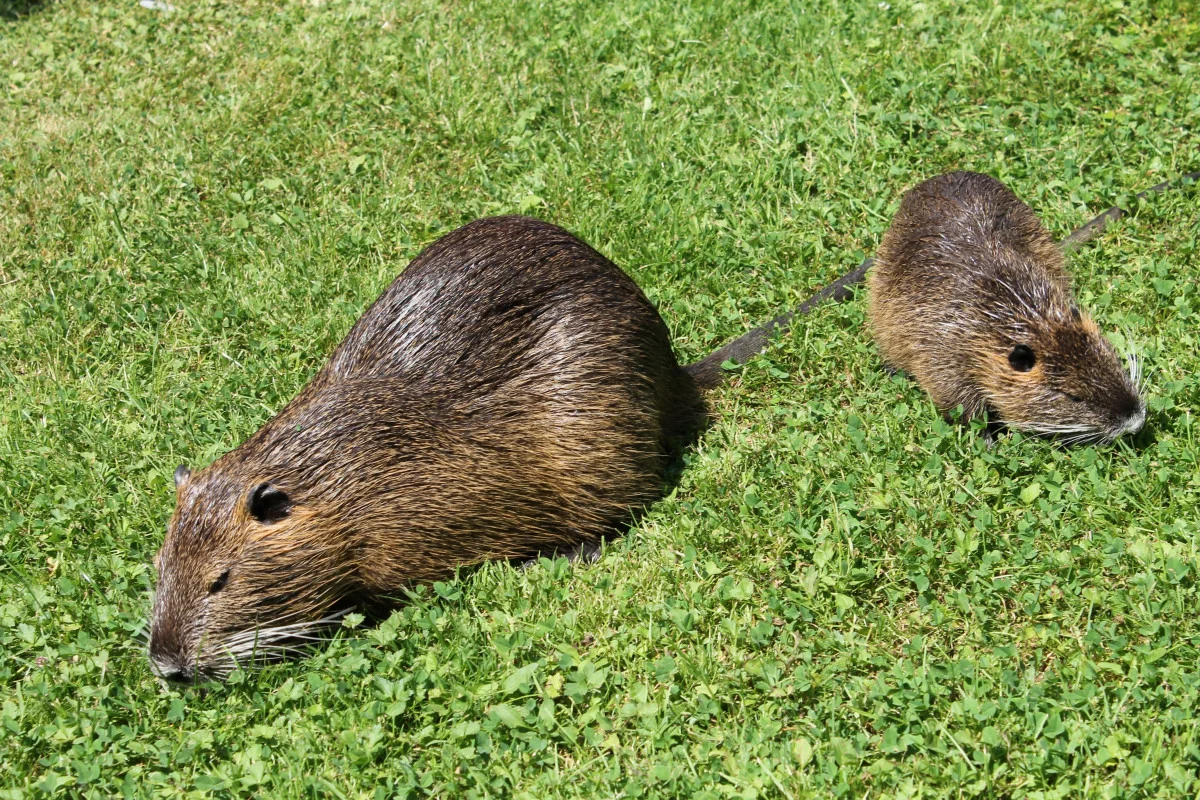
Muskrat:
Females primarily responsible for caring for and nursing the young
Young are relatively independent after a few weeks
Nutria:
Both parents contribute to the care of the offspring
Young stay with parents for several months before becoming independent
Comparison: Nutrias exhibit more extended parental care compared to muskrats.
Ecological Implications: Parental behavior influences the survival and development of offspring, impacting population dynamics.
20. Proximity to Human-Inhabited Areas
Muskrat:
Can be found near human-inhabited areas with suitable wetland habitats
May cause localized damage to crops or vegetation
Nutria:
Often found in proximity to human-inhabited areas, especially near water bodies
Considered an invasive species in some regions, causing damage to crops and wetlands
Comparison: Both species can adapt to human-altered landscapes, with nutrias being more commonly considered invasive.
Ecological Implications: Human-proximity behaviors impact interactions, conflicts, and potential ecological disturbances.
21. Behavior Toward Humans
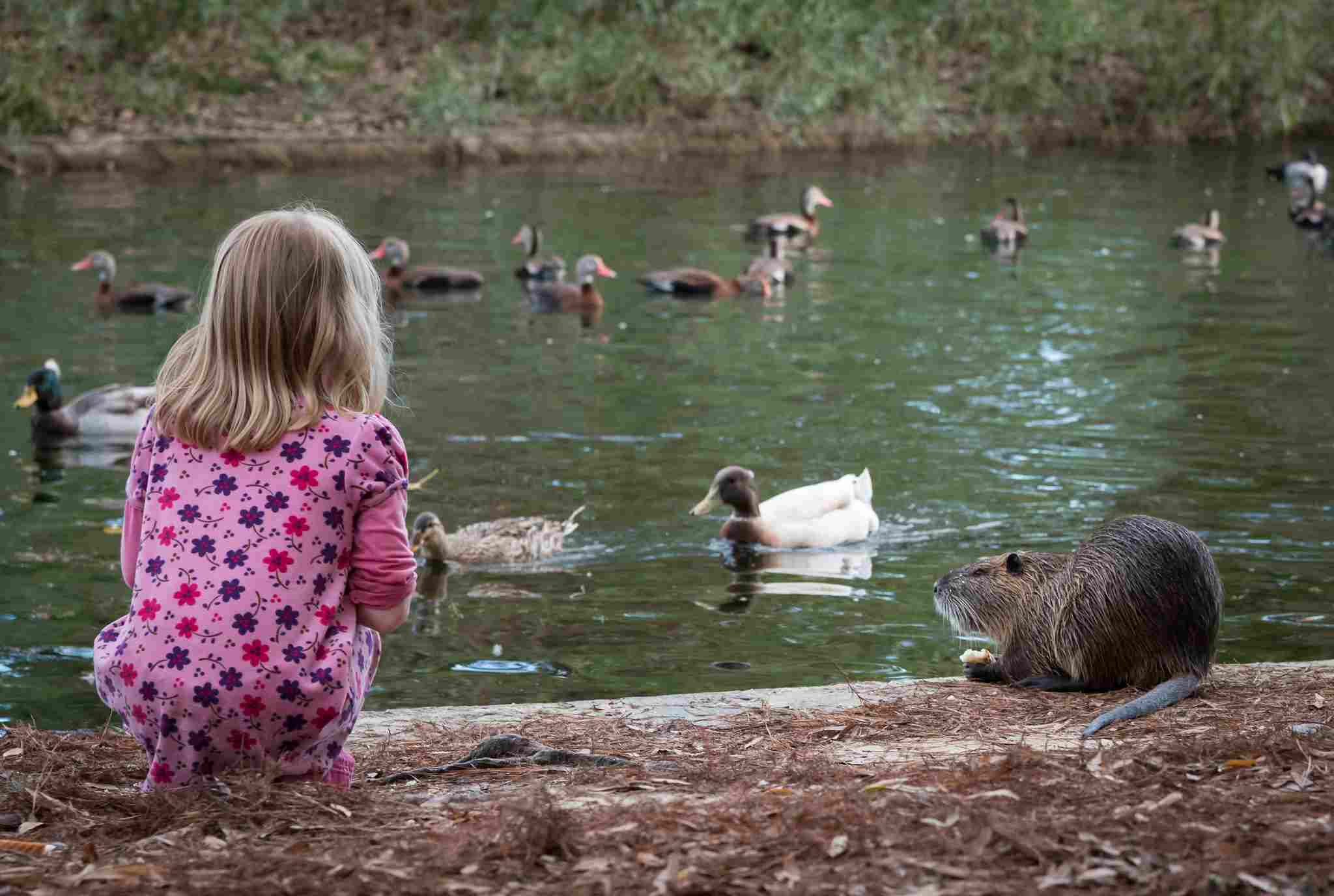
Muskrat:
Generally shy and tends to avoid direct contact with humans
May exhibit defensive behavior if cornered
Nutria:
Can be more tolerant of human presence, especially in urban areas
May approach humans in search of food, leading to potential conflicts
Comparison: Nutrias are generally more tolerant or even attracted to human presence compared to muskrats.
Ecological Implications: Behavioral responses to humans influence the potential for conflicts and the overall coexistence of these species in human-inhabited areas.
22. Danger Posed to Humans
Muskrat:
Generally poses minimal danger to humans
May bite if cornered or threatened, but injuries are rare
Nutria:
Generally poses low danger, but can become aggressive if provoked
Infrequent incidents of bites reported, usually during feeding interactions
Comparison: Both species generally present low danger to humans, with nutrias potentially being more assertive in certain situations.
Ecological Implications: Limited danger to humans reduces the likelihood of human-wildlife conflicts, allowing for coexistence in shared environments.
23. Associated Precautions
Muskrat:
Precautions involve avoiding direct contact, especially if the animal appears distressed or cornered
Implementing measures to prevent habitat destruction to minimize potential conflicts
Nutria:
Similar precautions as muskrats, with added emphasis on avoiding feeding them to prevent habituation
Management efforts to control invasive populations in certain regions
Comparison: Similar precautions for both species, with additional emphasis on not feeding nutrias to prevent habituation.
Ecological Implications: Responsible human behavior and habitat conservation contribute to the well-being of these species and their ecosystems.
24. Conservation Status
Muskrat:
Generally of least concern
Populations stable in many regions
Nutria:
Conservation status varies by region
Considered invasive in some areas, leading to management efforts
Comparison: Muskrats are generally more stable in terms of conservation status, while nutrias face challenges due to their invasive nature in certain regions.
Ecological Implications: Conservation status reflects the impact of these species on local ecosystems and the measures needed to maintain ecological balance.
*Summary of Comparison
Appearance:
Muskrat: Compact, dark brown fur, laterally flattened tail.
Nutria: Larger, reddish-brown coarse fur, round face.
Size:
Muskrat: 10-14 inches, 1-4 pounds.
Nutria: 17-25 inches, 15-22 pounds.
Weight:
Muskrat: 1-4 pounds.
Nutria: 15-22 pounds.
Dentition and Bite Force (PSI):
Muskrat: Moderate bite force.
Nutria: Strong bite force.
Physical Offensive Advantages:
Muskrat: Agility and speed.
Nutria: Larger size.
Physical Defensive Advantages:
Muskrat: Agility, swimming ability.
Nutria: Size, adaptability.
Speed:
Muskrat: 3-4 mph.
Nutria: 5-7 mph.
Agility:
Muskrat: Agile in water and on land.
Nutria: Agile, adaptable movements.
Senses:
Muskrat: Touch, hearing, vision.
Nutria: Touch, hearing, vision, nocturnal.
Overall Physical Capacity:
Muskrat: Aquatic life, moderate strength.
Nutria: Versatile, greater physical strength.
Habitat Preference(s) and Geographic Region:
Muskrat: Wetlands, North America, Europe, Asia.
Nutria: Wetlands, South America (origin), now global.
Tracks:
Muskrat: Webbed feet, tail drag mark.
Nutria: Larger tracks, webbed feet, tail drag mark.
Lifespan:
Muskrat: 2-3 years.
Nutria: 8-10 years.
Mode of Feeding:
Muskrat: Aquatic plants.
Nutria: Aquatic vegetation, crops, grasses.
Intelligence:
Muskrat: Limited cognitive abilities.
Nutria: Higher intelligence, adaptability.
Social Behavior:
Muskrat: Generally solitary.
Nutria: More social, family groups.
Mode of Reproduction:
Muskrat: Breeds throughout the year, short gestation.
Nutria: Breeding season influenced by environment, longer gestation.
Parental Behavior:
Muskrat: Female cares for young, relatively independent.
Nutria: Both parents contribute, young stay for months.
Proximity to Human-Inhabited Areas:
Muskrat: Near wetlands, may cause localized damage.
Nutria: Near water, considered invasive in some areas.
Behavior Toward Humans:
Muskrat: Shy, avoids direct contact.
Nutria: Tolerant, may approach for food.
Danger Posed to Humans:
Muskrat: Minimal danger, rare bites.
Nutria: Low danger, occasional aggression.
Associated Precautions:
Similar precautions for both, emphasis on not feeding nutrias.
Conservation Status:
Muskrat: Generally least concern, stable populations.
Nutria: Varies, considered invasive in some regions, requires management efforts.
Conclusion
I. Similarities:
Both muskrats and nutrias are herbivorous rodents.
They exhibit adaptability to aquatic environments and wetland habitats.
II. Differences:
Nutrias are larger, have a longer lifespan, and display higher intelligence compared to muskrats.
Nutrias can be more social and are considered invasive in certain regions, impacting conservation efforts.
Muskrats generally have a more stable conservation status compared to nutrias.
